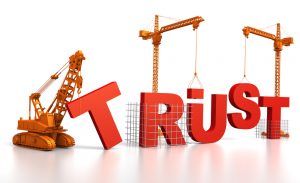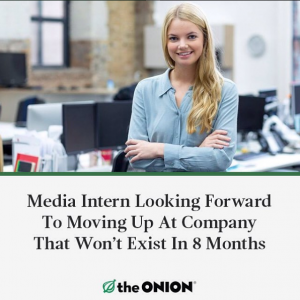
Photo Credit: http://www.businesswire.com/news/home/20130422006687/en/GE-Lighting-Reveals-LED-Bulb-Chief-Innovation
General Electric perhaps encapsulates the epitome of American capitalism; its embodies leadership, innovation, perpetuity, and success. Today, however, General Electric operates under tremendously different economic conditions than it did so in 1876. What makes General Electric a great business isn’t merely some set in stone, stationary business model; in my opinion it is their ability to constantly adapt to fluctuating economic trends and technological change, altogether illustrating a much larger theme: a culture built on organizational change.
Almost every force of change imaginable has threatened General Electric: 2 financial crises, unprecedented advances in technology, dramatic changes in the composition of the workforce, and a perpetuating stream of new competitors. GE mission statement states that they aim to ““build, move, power, and cure the world.”. This connotes the very reason for their sustainability: they embrace change. They foster an organizational culture where employees represent the driving before behind change, not the restraining force. According to one GE employee Raghu Krishnamoorthy, “we have stayed competitive for more than 130 years because of our relentless quest for progress on all fronts, including culture. We believe that there is no such thing as a 130-year culture.”

Photo Credit: http://www.brighthubpm.com/change-management/88725-tips-on-managing-the-organizational-change-curve/
In a more general sense, I believe that there is no set-in-stone culture code for any organization, rather, culture in successful organizations is contextual. That is, in order to resist the dangers of alienation which are spurred by organizational change, management should foster a culture that contextualizes itself with the pace of their business model evolving; as the business evolves, so should its culture. Thus, in my opinion, we shouldn’t view a company’s organizational culture and business model as two separate entities, but rather as a synergistic entity; a business model should be in flux with organizational culture and vice versa.
Recognizing the context in which organizational culture is symbiotically related to a company’s business model will be a crucial factor in differentiating which of today’s titans will triumph and falter.
Words: 320
Bibliography
Krishnamoorthy, Raghu. “GE’s Culture Challenge After Welch and Immelt.” Harvard Business Review, Harvard Business School, 26 Jan. 2015, hbr.org/2015/01/ges-culture-challenge-after-welch-and-immelt.
Nancy Langton, Stephen P. Robbins, Timothy A. Judge, Robbins, S. P., & Judge, T. A. (2012, April 12). Organizational Behaviour – Concepts, Controversies, Applications.
Walker, Jack H. “Factors influencing organizational change efforts: An integrative investigation of change content, context, process and individual differences.” Journal of Organizational Change Management, vol. 20, no. 6, 2007, www.emeraldinsight.com/doi/full/10.1108/09534810710831000.


 Trust is an essential component in any channel of the communication process within any organization. With trust prevalent in the atmosphere of any organization, subordinates place their confidence in the ability of managers to lead effectively and with integrity. Herein lies the fundamental challenge facing any organization: how do managers build and sustain a widespread climate of trust?
Trust is an essential component in any channel of the communication process within any organization. With trust prevalent in the atmosphere of any organization, subordinates place their confidence in the ability of managers to lead effectively and with integrity. Herein lies the fundamental challenge facing any organization: how do managers build and sustain a widespread climate of trust?



 s, dwindling on fuel and supplies that Hanjin could not afford to replenish. It is without a doubt that Hanjin’s bankruptcy will have lasting reverberations throughout the global supply chain. So how did such an operational catastrophe erupt?
s, dwindling on fuel and supplies that Hanjin could not afford to replenish. It is without a doubt that Hanjin’s bankruptcy will have lasting reverberations throughout the global supply chain. So how did such an operational catastrophe erupt? With the seemingly endless stories of cloud hacking and technology malfunctions, I have become interested in what lies in the future for the technology sector. As the technology bubble burst close to 20 years ago, the technology industry has grown to exponential heights with (systematically) little getting in its way. Operationally speaking, the tech industry has significant variability; for example who would have predicted BlackBerry’s fall from grace.
With the seemingly endless stories of cloud hacking and technology malfunctions, I have become interested in what lies in the future for the technology sector. As the technology bubble burst close to 20 years ago, the technology industry has grown to exponential heights with (systematically) little getting in its way. Operationally speaking, the tech industry has significant variability; for example who would have predicted BlackBerry’s fall from grace.  rchased American seed maker Mosanto for 66 billion in cash
rchased American seed maker Mosanto for 66 billion in cash

 rthermore, China imitating Western companies is by all means unethical, and will be damaging to their international reputation. In essence, this situation reflects government policy intervention that is justified by political rather than economic means. This is a dangerous precedent. From my perspective, if China wants to embrace free-market capitalism, they must embrace it wholly; let competition flourish, attract foreign investment and enact fair policy. This will be an interesting situation to watch unfold.
rthermore, China imitating Western companies is by all means unethical, and will be damaging to their international reputation. In essence, this situation reflects government policy intervention that is justified by political rather than economic means. This is a dangerous precedent. From my perspective, if China wants to embrace free-market capitalism, they must embrace it wholly; let competition flourish, attract foreign investment and enact fair policy. This will be an interesting situation to watch unfold.